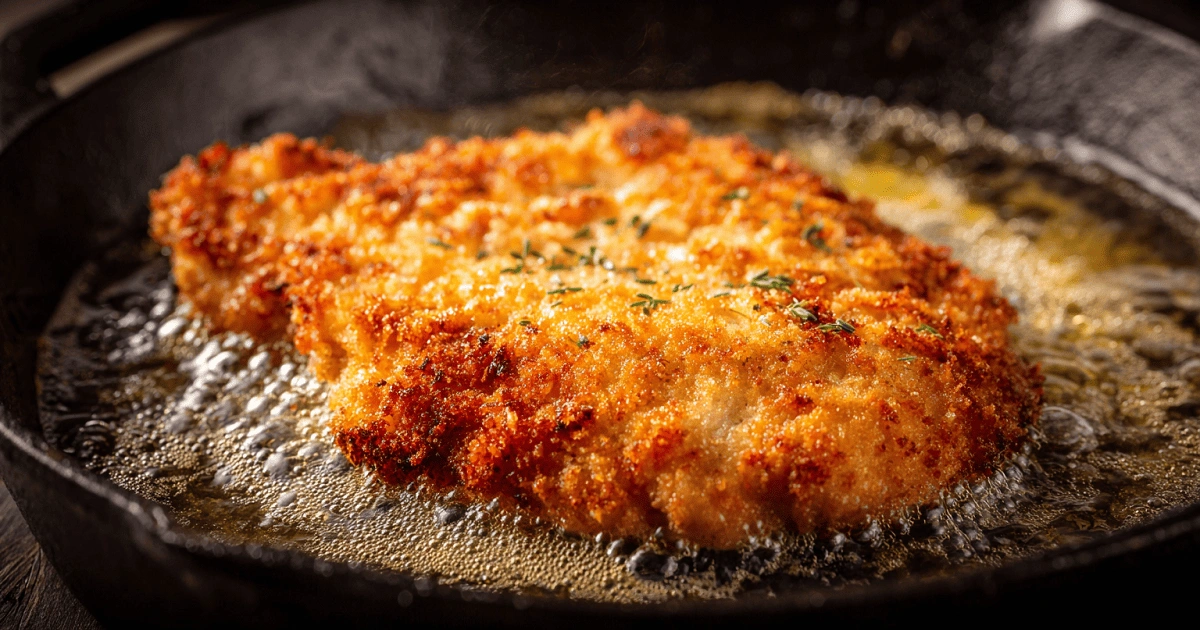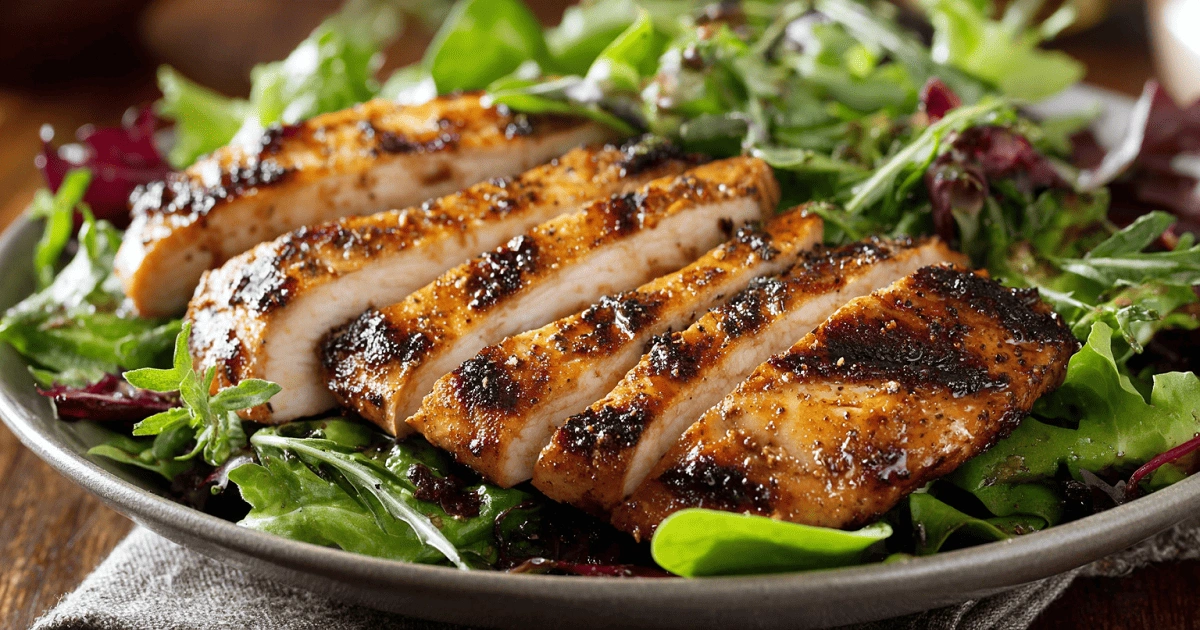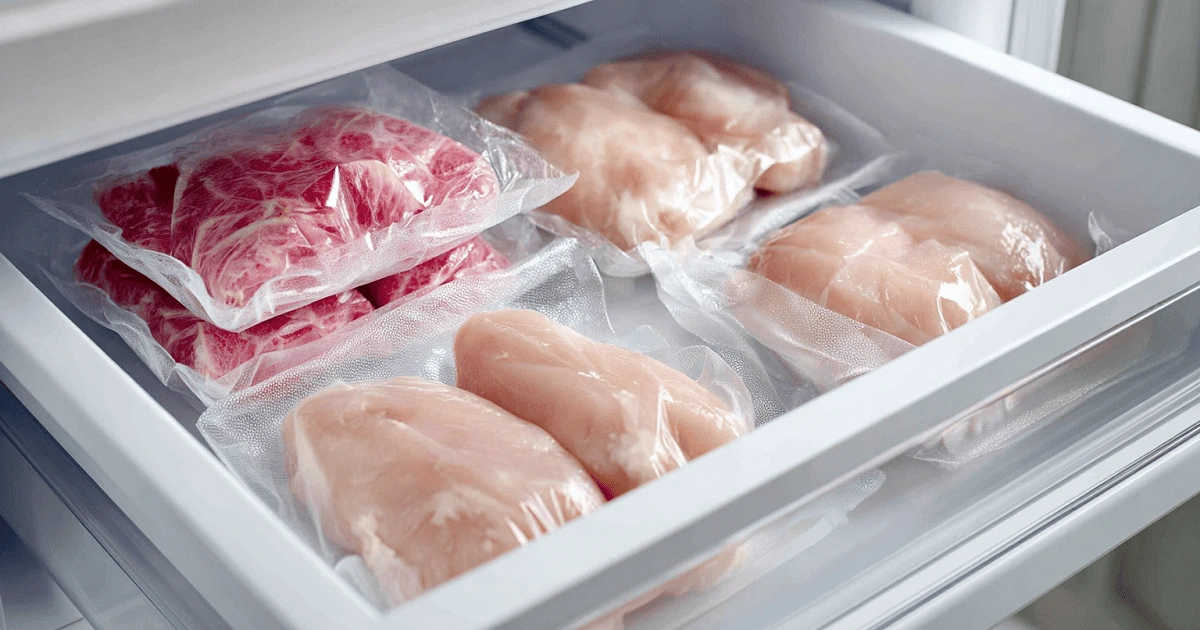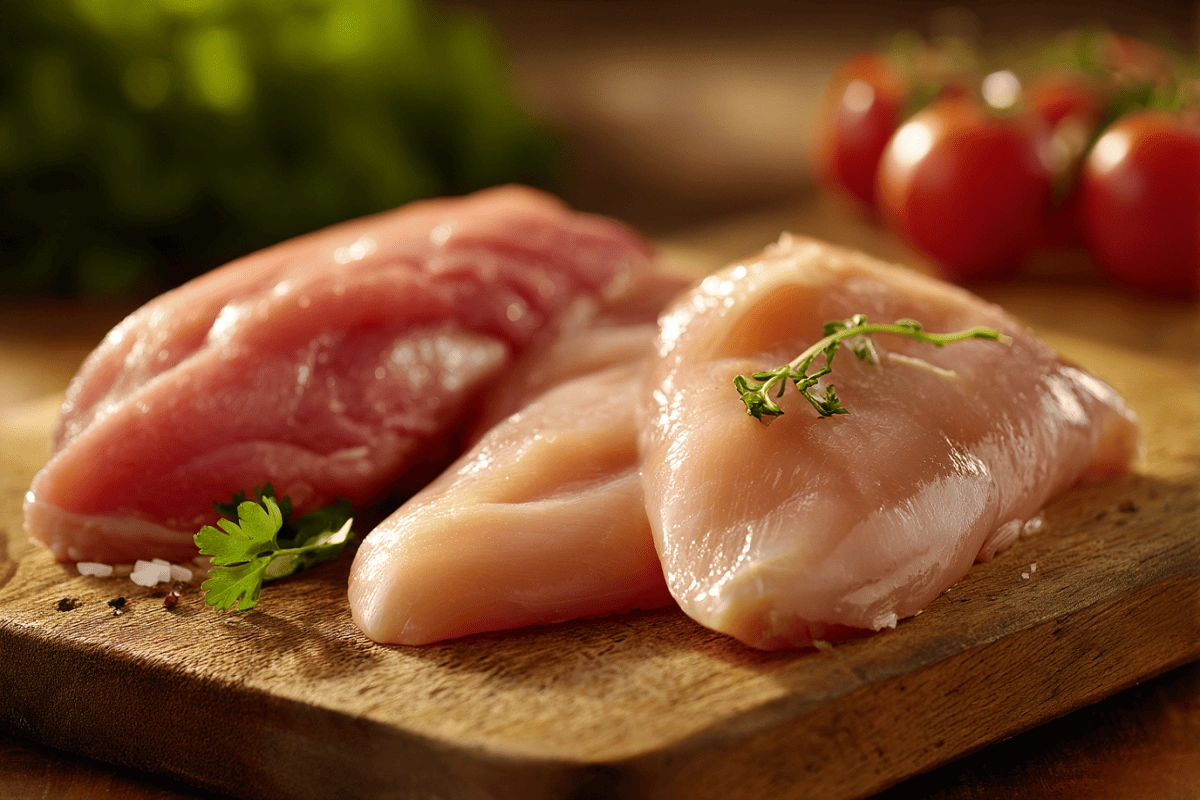Difference Between Chicken Cutlet and Thin Breast: 5 Must-Know Cooking Tips
The difference between chicken cutlet and thin breast primarily comes down to how they are prepared and used in cooking. Both cuts come from the chicken breast, but their preparation methods lead to distinct textures and cooking times.
Chicken Cutlet: A chicken cutlet is a thin slice of chicken breast that you pound to an even thickness. This process tenderizes the meat, making it perfect for quick cooking methods like frying or baking. Chicken cutlets are often breaded before cooking, resulting in a crispy exterior and tender interior. Dishes like chicken parmesan and schnitzel commonly use chicken cutlets.
Thin Breast: A thin breast is a chicken breast sliced horizontally into thinner pieces. Unlike a cutlet, these slices are not pounded, so they retain more of their natural texture. Thin breasts work well in dishes where quick cooking is necessary, such as grilling or sautéing. They are often chosen for lighter meals that highlight the chicken’s natural flavor without the added breading.
For more on preparing thin chicken breasts, explore the Ultimate Guide to Thin Chicken Breast Recipes.
Print
Difference Between Chicken Cutlet and Thin Breast: Top 5 Tips
- Total Time: 45 minutes
- Yield: 4 servings
Description
This classic Chicken Parmesan recipe uses tender, breaded chicken cutlets fried to a golden crisp, then topped with marinara sauce and melted mozzarella cheese. Perfect for a cozy family dinner, this dish brings together crisp texture and rich flavor in every bite.
Ingredients
-
2 boneless chicken breasts (sliced and pounded into cutlets)
-
1 cup Italian seasoned breadcrumbs
-
½ cup grated Parmesan cheese
-
1 cup shredded mozzarella cheese
-
1½ cups marinara sauce
-
2 large eggs
-
½ cup all-purpose flour
-
Salt and black pepper to taste
-
3 tablespoons olive oil (for frying)
-
Fresh basil or parsley (for garnish, optional)
Instructions
1️⃣ Prepare the Chicken Cutlets
• Slice chicken breasts horizontally and pound to even thickness.
• Season both sides with salt and pepper.
2️⃣ Bread the Chicken
• Set up a dredging station with 3 shallow bowls: flour, beaten eggs, and a mix of breadcrumbs and Parmesan.
• Dredge each cutlet in flour, then egg, then breadcrumbs. Press to coat well.
3️⃣ Fry the Cutlets
• Heat olive oil in a skillet over medium-high heat.
• Fry cutlets for 3–4 minutes per side until golden brown and crispy.
• Drain on paper towels to remove excess oil.
4️⃣ Assemble and Bake
• Preheat oven to 400°F (200°C).
• Spread ½ cup marinara sauce in a baking dish.
• Arrange fried cutlets in the dish and top each with more marinara and mozzarella.
• Bake for 10–12 minutes until cheese is melted and bubbly.
5️⃣ Garnish and Serve
• Top with chopped basil or parsley.
• Serve hot with pasta, salad, or vegetables.
Notes
-
For extra crispiness, place a wire rack on the baking sheet before baking the breaded cutlets.
-
You can make this dish ahead by frying the cutlets and refrigerating them; assemble with sauce and cheese just before baking.
-
Use freshly shredded mozzarella for better melt and texture than pre-shredded cheese.
-
Marinara sauce can be homemade or store-bought, but choose one with low sugar for best balance.
- Prep Time: 20 minutes
- Cook Time: 25 minutes
- Category: Lunch, Main Course
- Method: Frying, Baking
- Cuisine: Italian-American
Key Differences Between Chicken Cutlet and Thin Breast
1. Preparation Method
The preparation method is the most significant factor that differentiates chicken cutlets from thin breasts.
- Chicken Cutlet Preparation: To prepare a chicken cutlet, slice the chicken breast horizontally. The next key step is gently pounding the chicken to an even thickness with a meat mallet. This not only helps tenderize the meat but also ensures it cooks evenly from edge to center. Even thickness ensures that the cutlet cooks quickly and evenly. Breaded and fried dishes, like chicken parmesan, often use chicken cutlets due to their tenderness. Here’s a guide on how to properly pound chicken cutlets to ensure tender and uniformly cooked meat.
- Thin Breast Preparation: Thin breasts are created by slicing the chicken breast horizontally without pounding. This technique gives you a thinner piece of chicken while keeping its natural texture intact perfect for quick, even cooking without compromising flavor. Thin breasts are ideal for quick-cooking dishes such as stir-fries, grilled chicken, or pan-seared meals. The slicing method is simple and doesn’t require additional steps, making it a convenient option for quick meals.
Understanding these preparation methods is crucial for making informed decisions in the kitchen. Your choice between a chicken cutlet and a thin breast will impact the texture, flavor, and cooking time of your dish.
For tips on keeping thin chicken breasts moist during cooking, visit How to Keep Thin Chicken Breast Moist.
2. Texture and Cooking Time
Chicken cutlets and thin-sliced breasts may look similar, but their texture and cooking time can vary based on how they’re prepared.
- Chicken Cutlets: Pounding chicken cutlets makes them more tender. This tenderness makes cutlets ideal for recipes that require a soft, delicate bite, such as breaded and fried dishes. Chicken cutlets cook quickly and evenly because they are thin and uniformly thick. The quick cooking time is beneficial in recipes that use high heat, such as frying. Even thickness also helps the breading adhere well to the cutlet, creating a crispy exterior and juicy interior.

- Thin Breasts: Thin breasts retain their natural texture since they are not pounded. This texture is slightly firmer, making it suitable for dishes where the chicken needs to maintain its shape, such as salads, stir-fries, or grilled dishes. Thin breasts cook faster than a full chicken breast but may take slightly longer than cutlets. Their thinness makes them a convenient option for quick meals.
The difference in texture and cooking time is crucial when choosing between a chicken cutlet and a thin breast. Understanding these differences will help you select the right cut for your dish.
3. Culinary Uses and Best Dishes
Chicken cutlets and thin breasts offer diverse culinary uses. Each cut excels in different types of dishes. Knowing when to use each one can enhance the flavor and texture of your meals.
- Chicken Cutlets:
- Chicken Parmesan: This classic Italian-American dish uses breaded and fried chicken cutlets topped with marinara sauce and melted cheese. The tender cutlet pairs well with the rich, tangy sauce and cheese, creating a comforting and satisfying meal.
- Schnitzel: Originating in Austria, schnitzel is a dish where chicken cutlets are breaded and fried until golden and crispy. It’s often served with a slice of lemon for added flavor and can be paired with various sides like potatoes or salads.
- Chicken Milanese: Another Italian favorite, chicken Milanese, involves breaded chicken cutlets served with a light salad, usually dressed with lemon juice and olive oil. The crispy cutlet contrasts beautifully with the fresh, tangy salad, making it a perfect dish for warm weather.

- Thin Breasts:
- Grilled Chicken Salad: Thinly sliced grilled chicken breast served over fresh greens is a staple in many households. The simplicity of this dish allows the natural flavor of the chicken to shine, and it can be paired with various dressings and toppings to suit your taste.
- Chicken Piccata: In this Italian dish, thin chicken breasts are sautéed in a tangy lemon butter sauce with capers. The quick cooking time of the thin breasts keeps the chicken moist and tender, while the sauce adds a burst of flavor.
- Stir-Fry: Thin breast slices are perfect for stir-fry dishes. They cook quickly and absorb the flavors of the sauce and other ingredients. Whether you’re making a traditional Asian stir-fry or a fusion dish, thin chicken breasts are versatile and convenient.
These dishes showcase the strengths of chicken cutlets and thin breasts, making them suitable for different culinary applications. By understanding the best uses for each cut, you can choose the one that will enhance your dish and deliver the best results.
For more on the versatility of thin chicken breasts, explore What Is Thinly Sliced Chicken Breast Called? for further insights.

Nutritional Comparison: Chicken Cutlet or Thin Breast?
When comparing the nutritional content of chicken cutlets and thin breasts, consider several factors, particularly how the meat is prepared and cooked.
Calories
Chicken cutlets, especially when breaded and fried, typically contain more calories due to added breadcrumbs and oil. This preparation makes them more calorie-dense than thin breasts, which are often grilled or baked. If you’re monitoring your calorie intake, thin breasts are usually the better option.
Protein
Both chicken cutlets and thin breasts are excellent sources of protein, making them ideal for those looking to increase their protein intake. That said, how you prepare the chicken can have a small impact on its overall protein content. For example, breaded cutlets might have slightly less protein per serving due to the added breading, but the difference is generally minimal.
Fat Content
The fat content in chicken cutlets can be higher because of the oil used in frying. Thin breasts, especially if grilled or baked, are generally lower in fat, making them a healthier option for those watching their fat intake. The type of fat used in cooking also matters. Using healthier oils like olive oil can make a significant difference in the nutritional profile of your dish.
Vitamins and Minerals
Both cuts are good sources of essential vitamins and minerals, including B vitamins, iron, and zinc. However, the cooking method can affect nutrient retention. Baking or grilling helps preserve more nutrients compared to frying.
For health-conscious cooks, thin breasts often provide a leaner option that can be prepared in various healthy ways. However, chicken cutlets can also fit into a balanced diet, especially when prepared with healthier cooking methods.
Historical and Cultural Context
The historical and cultural significance of chicken cutlets and thin breasts reflects their roots in different culinary traditions, each with its unique flavors and methods.
Chicken Cutlets
Chicken cutlets have a rich culinary history, with strong roots in European traditions especially in Italian and Austrian kitchens. In Italy, dishes like chicken parmesan and chicken Milanese highlight the versatility of chicken cutlets. These dishes have gained global popularity, especially in the United States, where they are staples of Italian-American cuisine. Similarly, in Austria, schnitzel is a beloved dish that uses veal or chicken cutlets, breaded and fried to perfection. The popularity of these dishes has spread worldwide, making chicken cutlets a familiar and cherished ingredient in many kitchens.
Thin Breasts
Thin breasts have become popular in more health-conscious regions where grilling and lighter cooking methods are preferred. In the United States, grilled chicken breasts are a common feature in salads, sandwiches, and as a main course, especially for those aiming to reduce fat and calorie intake. In Asian cuisine, thin slices of chicken breast are often used in stir-fries. Quick cooking methods help maintain the meat’s moisture and tenderness, aligning with the fast-paced cooking techniques common in many Asian dishes.
Exploring the cultural background of these dishes makes you appreciate not just the flavors but the stories and traditions behind them. Whether preparing a classic Italian dish or a quick stir-fry, knowing the history behind these cuts can enrich your cooking experience.
Buying and Storing Chicken Cutlet vs Thin Breast
Selecting and storing chicken properly, whether choosing cutlets or thin breasts, is crucial for ensuring freshness and safety.
Buying Tips
- Choose chicken with a pinkish hue and no off-odors, signs of freshness. Fresh chicken should feel firm and be free of discoloration, indicating good quality.
- Check the expiration date on pre-packaged chicken, and select packages farthest from their sell-by date. This gives you more time to use the chicken before it spoils.
- When buying chicken from a butcher, ask when it was processed and how long it has been on display. Freshly cut chicken is always preferable.
Storage Tips
- Keep your chicken in the fridge for up to two days to stay fresh. If you’re not planning to cook it by then, pop it in the freezer to extend its shelf life.
- Freeze chicken by wrapping it tightly in plastic wrap or aluminum foil, then place it in a freezer bag to prevent freezer burn. Don’t forget to label the freezer bag with the date that way, you’ll always know how long the chicken’s been stored and when to use it by
- Defrost frozen chicken in the refrigerator overnight. Skip defrosting chicken at room temperature it can lead to bacterial growth. Instead, thaw it safely in the fridge for best results.
Proper storage preserves the quality and flavor of the chicken, ensuring the best results in your dishes.

FAQs on the Difference Between Chicken Cutlet and Thin Breast
1. What is the difference between chicken cutlet and thin breast?
- The primary difference lies in preparation. Chicken cutlets are typically pounded thin and coated in breadcrumbs, which makes them extra tender and perfect for quick, golden pan-frying. Thin breasts are simply sliced thin and retain more of their natural texture, making them suitable for quick cooking methods like grilling or sautéing. Understanding this distinction helps you choose the right cut for your dish.
2. Can I substitute thin breasts for chicken cutlets in recipes?
- Absolutely you can swap in thin-sliced chicken breasts for cutlets in most recipes with great results. Just be sure they’re evenly sized for consistent cooking. However, remember that the texture and cooking time will differ. Thin breasts may require longer cooking times and won’t be as tender as pounded cutlets. If a recipe calls for breading and frying, you can still achieve a similar result with thin breasts, but the texture might be firmer.
3. Which is healthier, chicken cutlet or thin breast?
- Thin breasts are generally healthier, especially if grilled or baked. They contain less fat and fewer calories than breaded and fried cutlets, making them a better option for those watching their calorie or fat intake. However, chicken cutlets can still fit into a balanced diet if prepared using healthier methods, such as baking instead of frying.
4. How can I keep thin chicken breasts moist while cooking?
- To keep thin chicken breasts juicy and tender, the key is not to overcook them just a few extra minutes can dry them out. Thin breasts cook quickly, so it’s crucial to remove them from heat as soon as they reach an internal temperature of 165°F. You can also marinate the breasts before cooking to add moisture and flavor. Techniques like pan-searing or baking with a light coating of oil can also help retain moisture.
5. Is there a specific dish where chicken cutlets are essential?
- Chicken parmesan is a classic dish where chicken cutlets excel due to their tenderness and ability to hold the breading well. The pounding process makes the cutlet tender, which is vital for achieving the right texture in this dish. While thin breasts can substitute, the texture and overall result may differ slightly.
Final Thoughts on Chicken Cutlet vs Thin Breast
Understanding the difference between chicken cutlet and thin breast is essential for anyone looking to enhance their cooking skills. Each cut offers unique benefits, and knowing when to use one over the other can significantly impact your dishes’ outcome. Whether preparing a tender chicken parmesan with a chicken cutlet or a light grilled chicken salad with thin breasts, selecting the right cut is crucial for success in the kitchen.
Mastering the preparation and cooking techniques for each cut will expand your culinary repertoire and allow you to create delicious, well-balanced meals tailored to your tastes and nutritional goals. With the insights provided in this guide, you are now equipped to make informed choices and elevate your cooking with these versatile chicken cuts.
For more insights and tips on cooking chicken, don’t forget to explore related content like How to Keep Thin Chicken Breast Moist and Ultimate Guide to Thin Chicken Breast Recipes. These resources will further enhance your knowledge and boost your confidence in the kitchen.

